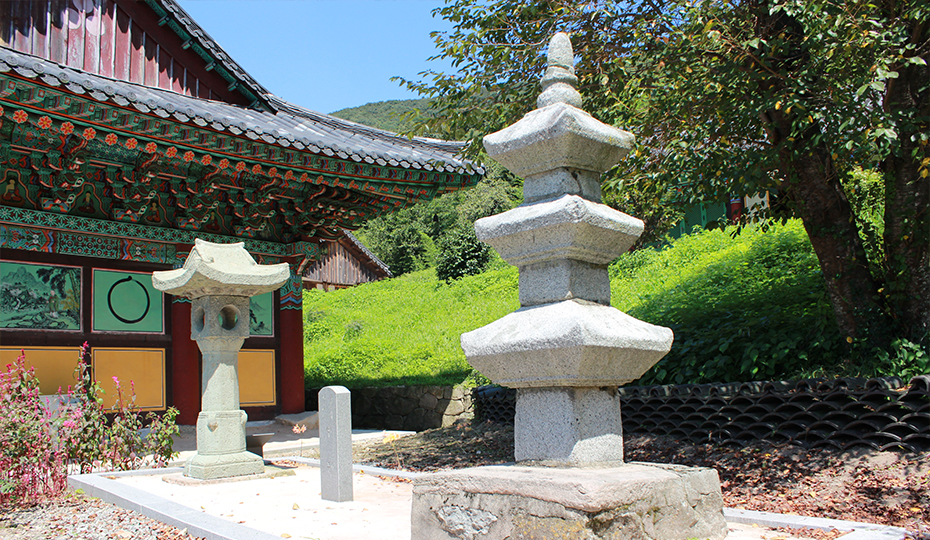Jeollanam-do Tangible Cultural Asset No. 84
Stone Lantern of Yongcheonsa Temple in Hampyeong

Date of cultural asset designation: October 20, 1981
A stone lantern’s symbolic meaning lies in not only illuminating a temple but also shining the Buddha’s light on every corner of the world. The stone lantern, built during the Joseon Dynasty, is considered both rough and warm in terms of size and structure. Its height is 2.37 meters and made of granite.
Most of the relics at Yongcheonsa Temple were burned and disappeared during the Korean War, but fortunately this stone lantern has mostly kept its original status, except for two broken stone turtles attached to the upper part of stone pillar bases. The simply described turtle sculptures have sophisticated shapes. The stone lantern’s roof has unique patterns, imitating a wooden buildings’ paljak (hip-and-gable) roof style, which resembles the Chinese character of 八 (eight) when seen from the side. Letters inscribed on octagonal pillar-shape stones under the stone lantern, which originated from the eleventh year of King Sukjong’s reign in 1685 during the Joseon Dynasty, show a donator’s name. Due to its rough, warm size and structure, this stone lantern is considered to be one of the best rectangular stone lanterns from the Joseon Dynasty.
